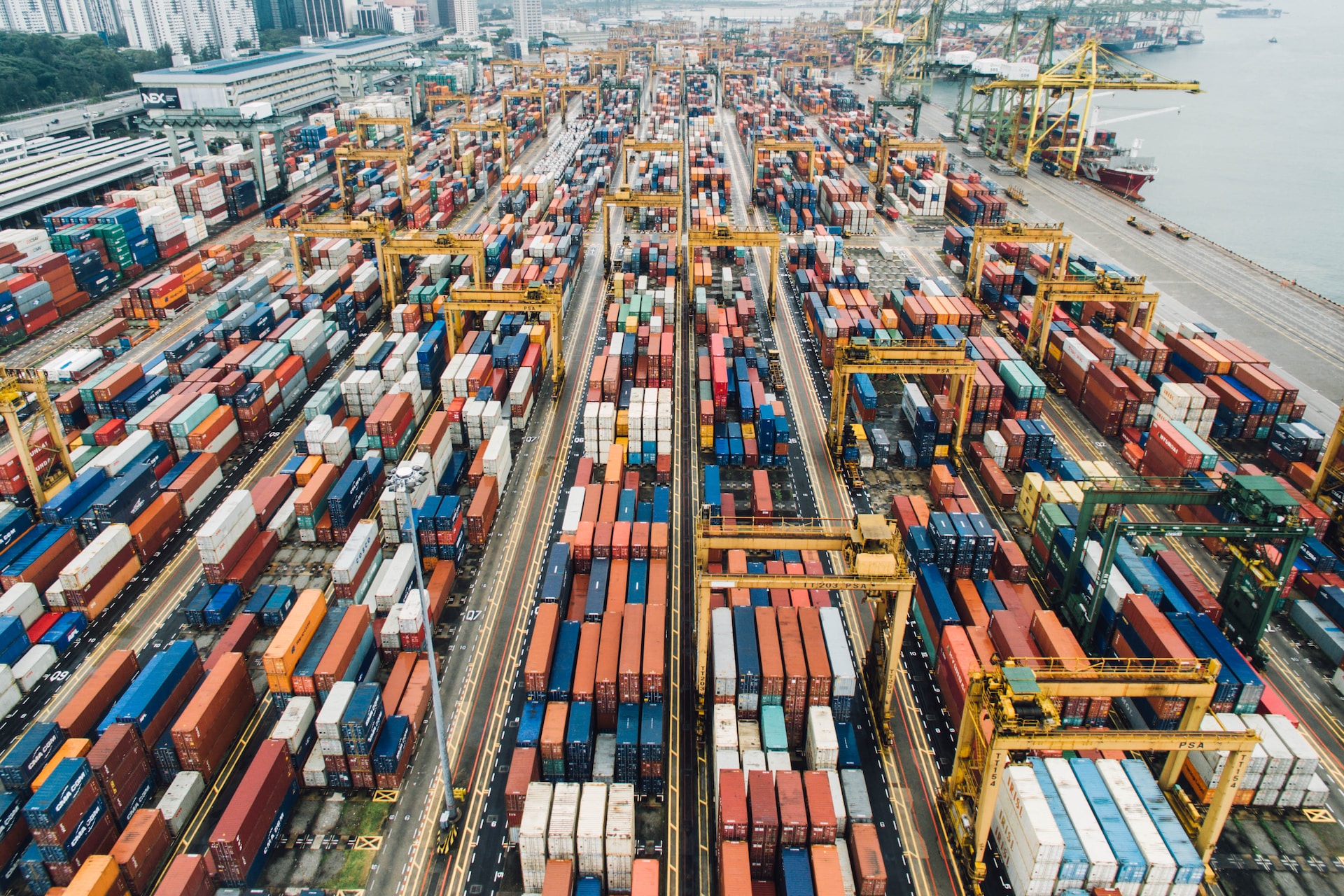In the world of supply chain management, particularly in the produce sector, lost shipments pose a significant problem.
It disrupts operational efficiency, leads to financial loss, and may also affect customer satisfaction seriously.
Both the sender and receiver face inconveniences when a shipment goes missing, though for differing reasons.
These problems can, however, be minimized if not eradicated, with the implementation of appropriate measures.
The methods to be discussed will include the use of advanced technology, effective communication and improved processes.
These strategies, if correctly employed, can provide tangible solutions to reducing lost shipments, thereby enhancing the overall function of your supply chain.
Strategies For Reducing Lost Shipments In Produce Shipping
1. Implement advanced tracking technology
One of the most critical strategies for reducing lost shipments in produce shipping is the implementation of advanced tracking technology.
Advanced tracking technologies offer a more precise and reliable means to monitor the movement and location of produce shipments in real-time.
This ensures that cargo is not lost, misdirected, or undelivered.
Moreover, these technologies don’t only reveal where a shipment is at any given moment, but also its condition in terms of temperature and humidity levels– key factors that can significantly affect the produce’s freshness quality
The presence of a robust tracking system also serves as a deterrent against theft and misrouting since the status and location of all shipments are constantly monitored and documented.
Beyond simply knowing the location of a shipment, advanced tracking technology can also provide detailed data about route efficiency and possible delays.
This information can then be used to devise more effective routes, predict potential issues before they arise and make real-time adjustments to avoid the loss of shipments.
With such technology, the risk of losing shipments due to unexpected events or incompetent handling can be significantly minimized.
Moreover, it allows for the quick recovery of misplaced or misrouted packages.
Furthermore, advanced tracking technology makes it possible to alert recipients, transporters, and the produce company about the exact arrival time of the produce, thus, minimizing the risk of packages being lost in transit or at the delivery docking points.
The key to achieving all these benefits is to choose the right tracking technology and integrate it well with the existing company’s logistic system.
Produce companies need to invest in technologies that offer real-time tracking, easy access to information, alerts for potential issues, and comprehensive transit visibility from pickup to delivery.
Equally important, the chosen technology must be intuitive and easy to use by all parties involved in the produce delivery process.
With an effective and advanced tracking system in place, produce companies can significantly reduce the occurrence of lost shipments and the resulting financial loss.
Ultimately, the implementation of advanced tracking technology in produce shipping is not only about monitoring but also about improving operational efficiency and accountability in the shipping process.
2. Improve Packaging Methods
When it comes to reduce lost shipments in produce shipping, improving packaging methods should be high on the priority list.
Produce is typically fragile and perishable, requiring stretch wrapping and properly aligned stacking to minimize damages that could lead to loss during shipment.
The packaging method employed should also include the use of strong and durable packaging materials that can withstand both the weight of the produce and the rigors of transportation.
These materials might include sturdy boxes, crates, or thermally insulated packaging for produce that is sensitive to temperature changes.
Furthermore, effective packaging provides a barrier against external factors such as heat, moisture and pests that can compromise the quality of the produce and subsequently lead to shipment loss.
An essential component of improved packaging is the appropriate labeling of the packages.
This includes providing complete and accurate description of the contents, destination, and the shipper’s details on the package, which goes a long way in ensuring the package reaches its rightful destination and reduces chances of being lost.
Employing packaging methods that have built-in tracking mechanisms can also significantly reduce the risk of lost shipments.
This may involve the use of barcodes, readable only by machines, or QR codes that are easily scanned using a smartphone, making it more convenient for tracking produce in transit.
Incorporating recyclable or biodegradable materials in packaging can make a big difference too, as it could contribute to the company’s sustainability goals without compromising the safety of the produce.
Testing the packaging methods is also crucial. Here, the produce is packaged under normal conditions and subjected to the same transportation stress it would undergo during shipping.
This would give a clearer image of whether or not the packaging method is effective and sufficient enough to prevent lost shipments.
Finally, employing customized packaging solutions for specific types of produce can help further reduce the risk of lost shipments.
This is especially true for produce that are fragile, sensitive to temperature changes or require specific handling procedures.
To sum it all, improving packaging methods is a viable strategy in reducing lost shipments in produce shipping, owing to the fact that effective and efficient packaging not only ensures the safety of the produce, but also helps in tracking the shipment, thus minimizing losses.
3. Train Staff on Proper Handling Techniques
One of the significant strategies for reducing lost shipments in produce shipping is to train the staff on proper handling techniques.
This is a critical aspect of ensuring that the produce arrives at its destination in the best possible condition.
The staff should be trained about the unique handling and storage requirements of each type of produce.
Proper training would require a good understanding of the maturity stage of the fruits and vegetables, appropriate temperature settings, and handling procedures to prevent damage.
By training staff in these areas, a lot of produce spoilage during shipping can be greatly minimized, leading to fewer lost shipments.
It is also important to train staff in the proper loading and unloading techniques.
Ensure they understand the importance of correct weight distribution inside the truck or container to prevent tipping and damage during transport.
They should also be familiar with safety regulations during transportation, including compliance with the policies of traffic management authorities.
Proper training should extend to warehouse staff, who play a critical role in storage and inventory management.
This involves understanding the correct stocking practices and following the first-in-first-out (FIFO) system to ensure that the oldest stock is shipped out first, reducing the chances of spoilage and loss.
Training should also involve sessions on using technology effectively for tracking shipments and maintaining accurate inventories.
Regularly updating staff skills through training and knowledge sharing is essential to keep up with changes in technology, regulations, and industry best practices.
This not only improves their job performance but also contributes to the overall reduction of lost shipments in the produce shipping industry.
One of the key outcomes of proper staff training is that it leads to improved reliability of the shipping process.
This builds confidence among your customers, leading to more business opportunities and growth for your organization.
4. Perform Regular Equipment Maintenance
One crucial strategy in reducing lost shipments in produce shipping is the performance of regular equipment maintenance.
Ensuring that all equipment involved in the shipping process is in perfect condition is non-negotiable for all produce shipping companies.
Equipment maintenance is a key preventive measure against unexpected breakdowns which could lead to shipments being lost or extensively delayed.
Elevating the importance of regular equipment maintenance reduces the occurrence of technical issues, meaning fewer lost shipments and improved shipping efficiency
Businesses which prioritize and allocate resources to routine maintenance generally experience less equipment failure.
To track and manage these equipment care tasks systematically, consider using a computerized maintenance management system (CMMS).
This advanced tool can yield data useful in predicting potential equipment malfunctions before they arise, thereby helping to protect your shipments.
Adopting this proactive approach in equipment care will minimize the likelihood of unexpected equipment breakdowns disrupting your shipping schedule.
Furthermore, regular maintenance can extend the lifespan of your equipment, making it a cost-effective strategy in the long term.
Bear in mind that both small and major equipment need regular maintenance for optimal functioning.
Examples of such equipment, common in the produce shipping field, include forklifts, pallet jacks, conveyor belts, trucks and refrigeration systems.
Ensure to stick to the manufacturer’s recommended service intervals and also perform additional checks when necessary to keep your equipment at its best form.
Maintaining a log for each piece of equipment would make it easier to track its maintenance history and predict when service may potentially be needed.
With consistent maintenance, equipment will not only work at peak efficiency, it will keep your produce moving smoothly through each stage of the shipping process, thereby reducing the likelihood of lost shipments.
It’s critical to not only perform regular maintenance, but also to use qualified technicians for any servicing or repair needs to ensure the work is done correctly and safely.
The consequences of improper maintenance can be disastrous, causing interruptions, delays and potentially loss of goods, hence, it is a vital element in ensuring the smooth running of your shipping processes.
5. Develop well-detailed shipping schedules.
One of the most effective strategies for reducing lost shipments in produce shipping is to develop well-detailed shipping schedules.
Shipping schedules serve as the backbone of the entire shipping process, mapping out what needs to be done and when it should be completed to ensure smooth and timely deliveries.
Without a precise schedule, shipments can easily get lost, delayed, or worse, forgotten, leading to financial losses and reputational damage.
Therefore, it’s fundamental to invest time and resources in developing comprehensive and effective shipping schedules that are adhered to strictly by all parties involved in the shipping process.
In creating the schedules, it’s critical to consider factors such as the nature of the produce being shipped, destinations, and weather patterns.
These considerations are crucial because factors such as bad weather could disrupt delivery schedules, ultimately leading to lost shipments.
Potential delays and obstacles should also be anticipated, including vehicle breakdowns, traffic jams, and strict customs regulations at the destinations.
The ability to anticipate such eventualities facilitates the development of strategies in advance that can mitigate these risks.
Having backup plans and contingency strategies play a significant role in ensuring any disruptions to the shipping schedule do not lead to lost shipments.
Beyond the creation of the schedule, effective implementation is equally important.
This calls for ensuring all parties involved, from the produce suppliers, transport companies, drivers, and even the end customers, have a clear understanding of the schedule and their respective roles in its execution.
Moreover, it’s helpful to adopt technology in the creation, distribution, and implementation of shipping schedules.
Technologies such as transport management systems can help automate the creation of these schedules and make it easier to disseminate the information to all stakeholders.
Such systems can also facilitate real-time tracking and adjustments of shipping schedules and routes in response to unforeseen circumstances.
In essence, developing well-detailed shipping schedules is not just about creating a plan for delivering produce but also about anticipating potential challenges and proactively developing solutions to prevent lost shipments.
6. Strengthen supplier and transporter communication.
One of the essential strategies for reducing lost shipments in produce shipping is improving the lines of communication between suppliers and transport companies.
Strengthened communication yields improved understanding and better operational cohesiveness, significantly reducing the chances of lost shipments.
Suppliers and transporters must engage in an open, honest, and regular interchange of information to ensure smooth operation.
When the communication channels are robust, suppliers can provide up-to-date information on the shipment, its location, and any adjustments needed.
Not only does this robust engagement help in tracking the shipment, but it also improves the overall efficacy of the shipping process.
In case of any changes in the shipping schedule or details, clear communication prevents misunderstandings that can lead to lost shipments.
It is crucial for both parties to understand their roles and responsibilities in the transportation process.
This involves knowing who is in charge of specific aspects of shipping such as packaging, loading, transport, and delivery.
Also, meticulous documentation assists in keeping track of each party’s role and helps avoid disputes and confusion.
Structured and frequent meetings between transport companies and suppliers can help ensure all important aspects are discussed, and any potential issues resolved in a timely manner.
Incorporating the use of technology for communication can enhance the efficiency and timeliness of the information exchanged.
Technological tools such as emails, teleconferencing, and shipment tracking software can be effectively deployed to streamline communication.
Error-free, timely communication can drastically cut down the losses incurred due to misunderstandings and misinformation.
Transparency is another key aspect of communication – being upfront about potential challenges, and discussing them openly can lead to collective problem-solving and help avert shipment losses.
Finally, suppliers and transporters should strive towards creating a partnership based on trust and mutual respect, which can ensure smooth operations and minimize the chances of lost shipments.
7. Use Reliable, Well-Vetted Transport Companies
One critical aspect in reducing lost shipments in produce shipping is the use of reliable, well-vetted transport companies.
Certainly, all business entities highly value reliability in their choice of service providers, particularly in the area of logistics, because the consequences of service failures can be dramatically high.
In the produce shipping industry, this is more significant due to the timing and freshness factors attached to this particular type of goods.
Customers’ reliance heavily lies on the reputation and reliability of transport companies given that they are responsible for the actual delivery of produce from the supplier to the marketplace.
Therefore, in efforts to minimize lost shipments, companies must operate with transport companies that have road-tested credentials and positive track records in successful deliveries.
Failing to use well-vetted and proven companies increases the likelihood of shipment loss due to a variety of potential failures, ranging from equipment breakdown to poor handling.
These eventualities may lead to damage or spoilage of the produce, which essentially equals lost shipment since the shipment’s value is greatly diminished or completely lost.
Hence, engaging well-vetted transport companies is an investment worth every penny.
Such companies employ professional drivers and handlers, use up-to-date equipment, comply with all regulatory measures, and follow best transport practices, hence ensuring high-standard service quality.
No doubt, this ensures that the incidence of lost shipments is kept to the lowest level possible.
Furthermore, these companies maintain a system of proper freight auditing and tracking, with full transparency, providing their customers the ability to monitor their shipments’ status in real-time.
This extends the scope of control and further minimizes the risk of lost shipments.
Additionally, well-vetted transport companies often provide insurance coverage for shipments, which adds an extra layer of security and protection against losses during transit.
Therefore, the option of partnering with reliable, well-vetted and reputable transport companies has an immediate impact on reducing lost shipments.
It is a measure that assures the safe and timely delivery of produce freight to the designated locations, thereby effectively mitigating the issue of lost shipments.
The Bottom Line
To ensure efficient and high-quality shipping operations, implementing advanced tracking technology and improving packaging methods is key.
Moreover, conducting regular equipment maintenance and developing detailed shipping schedules can significantly decrease shipping errors and delays.
Training staff on proper handling techniques is equally important in minimizing product damages.
Ultimately, optimizing shipping operations requires strengthened communication between suppliers and transporters, and utilizing reliable and well-vetted transport companies.
Therefore, an integrative approach encompassing all these strategic measures guarantees that your shipping operations will operate seamlessly, improving customer satisfaction and driving business growth.



